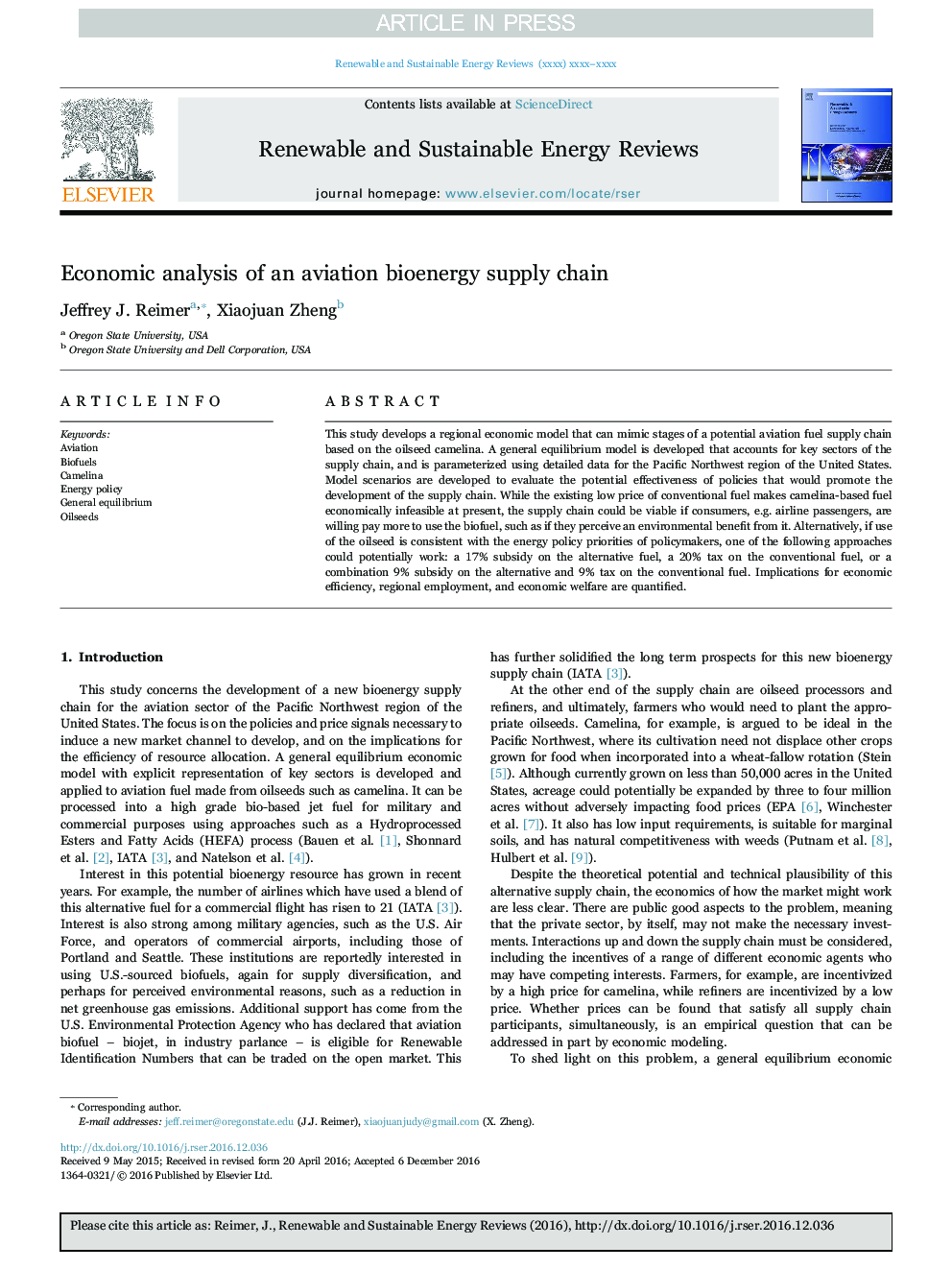| Article ID | Journal | Published Year | Pages | File Type |
|---|---|---|---|---|
| 5482987 | Renewable and Sustainable Energy Reviews | 2017 | 10 Pages |
Abstract
This study develops a regional economic model that can mimic stages of a potential aviation fuel supply chain based on the oilseed camelina. A general equilibrium model is developed that accounts for key sectors of the supply chain, and is parameterized using detailed data for the Pacific Northwest region of the United States. Model scenarios are developed to evaluate the potential effectiveness of policies that would promote the development of the supply chain. While the existing low price of conventional fuel makes camelina-based fuel economically infeasible at present, the supply chain could be viable if consumers, e.g. airline passengers, are willing pay more to use the biofuel, such as if they perceive an environmental benefit from it. Alternatively, if use of the oilseed is consistent with the energy policy priorities of policymakers, one of the following approaches could potentially work: a 17% subsidy on the alternative fuel, a 20% tax on the conventional fuel, or a combination 9% subsidy on the alternative and 9% tax on the conventional fuel. Implications for economic efficiency, regional employment, and economic welfare are quantified.
Related Topics
Physical Sciences and Engineering
Energy
Renewable Energy, Sustainability and the Environment
Authors
Jeffrey J. Reimer, Xiaojuan Zheng,
